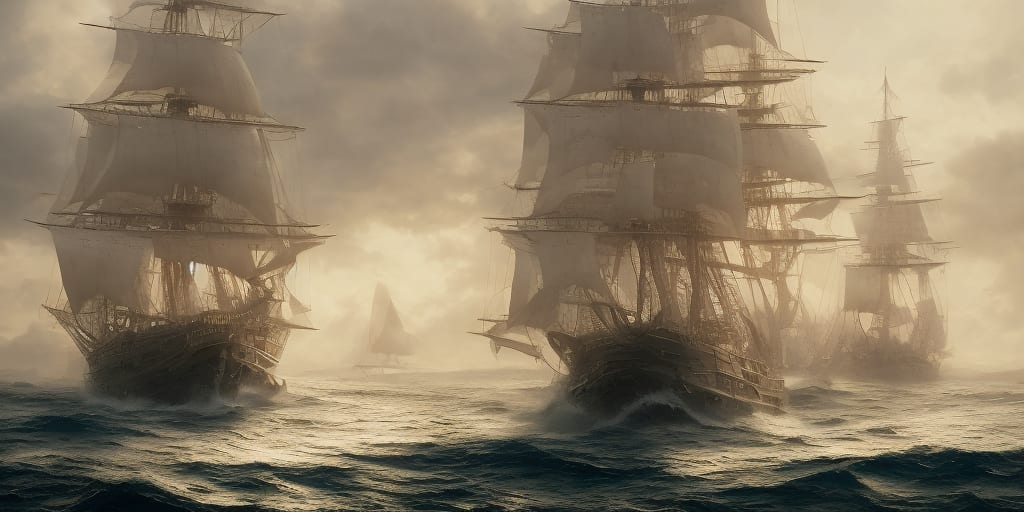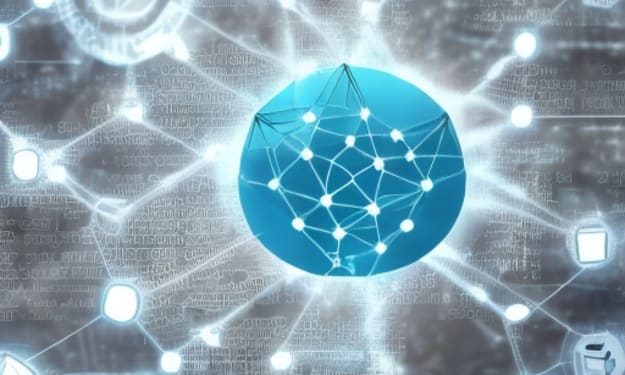Sailing the Seas of AI: Exploring the Great Seafaring Age of Artificial Intelligence
How Artificial Intelligence is Revolutionizing Maritime Operations and Ocean Exploration

The great seafaring age of artificial intelligence is upon us. Just as explorers set out to discover new lands, AI is venturing into uncharted territories, pushing the boundaries of what is possible. The oceans have always been a source of mystery and wonder, and now they are becoming the playground for AI innovation. In this article, we will explore the great seafaring age of artificial intelligence and how it is changing the way we interact with the ocean and the world around us.
The Great Seafaring Age of Artificial Intelligence:
AI is making waves in the maritime industry, revolutionizing the way we navigate and explore the ocean. From underwater drones to smart buoys, AI is bringing new levels of efficiency and accuracy to maritime operations. One of the most exciting applications of AI in the maritime industry is in the development of autonomous ships. These unmanned vessels can navigate and operate on their own, using AI algorithms to make decisions and avoid obstacles.
Autonomous ships have the potential to transform the shipping industry, reducing costs and improving safety. They can operate around the clock, without the need for crew members, and can navigate more efficiently than traditional ships. In addition, AI can be used to optimize shipping routes, reducing fuel consumption and emissions.
AI is also being used to explore the ocean and study marine life. Underwater drones equipped with AI algorithms can capture high-resolution images and video of the ocean floor, providing new insights into the deep sea. AI can also be used to track the movements of marine animals, helping researchers to better understand their behavior and migration patterns.
In addition, AI is being used to monitor and predict weather patterns and ocean conditions. Smart buoys equipped with sensors and AI algorithms can measure ocean temperature, salinity, and other variables, providing valuable data for weather forecasting and climate research.
The Future of Seafaring AI:
As AI continues to advance, the possibilities for its application in the maritime industry are endless. From underwater mining to offshore wind farms, AI is opening up new frontiers in ocean exploration and development. However, there are also challenges that need to be addressed, such as the need for cybersecurity measures to prevent hacking and data breaches.
The great seafaring age of artificial intelligence is just beginning, and the opportunities for innovation and discovery are vast. As we continue to explore the ocean and the world around us, AI will play an increasingly important role in shaping the future of seafaring.
Conclusion:
The great seafaring age of artificial intelligence is an exciting time for the maritime industry and for humanity as a whole. As AI advances and new applications emerge, we are poised to unlock the secrets of the ocean and explore new frontiers in seafaring. However, we must also be mindful of the challenges that come with this new age of AI, and work to ensure that it is used responsibly and ethically. With careful consideration and innovation, we can create a future where AI and seafaring go hand in hand, transforming the way we interact with the ocean and the world around us.
AI faces several challenges in ocean exploration, including:
1. Limited data: The ocean is vast and much of it is unexplored, which means that there is limited data available for AI to analyze. This can make it difficult to train AI models and make accurate predictions.
2. Harsh conditions: The ocean can be a harsh and unpredictable environment, with strong currents, rough waves, and extreme temperatures. This can make it difficult for AI-powered vehicles and sensors to operate effectively.
3. Communication: Communication is key to successful ocean exploration, but it can be challenging to maintain a reliable connection between underwater vehicles and the surface. This can limit the effectiveness of AI-powered devices and sensors.
4. Power limitations: Many AI-powered devices and sensors require a significant amount of power to operate, which can be a challenge in the ocean where power sources may be limited.
5. Safety concerns: The ocean can be a dangerous place, with potential hazards such as underwater volcanoes, deep sea vents, and unpredictable weather. This raises safety concerns for AI-powered vehicles and sensors, as well as for human operators.
6. Environmental impact: As with any technology, the use of AI in ocean exploration can have environmental impacts. For example, the use of underwater drones and other vehicles can disturb marine life and damage sensitive ecosystems.
Addressing these challenges will require continued innovation and collaboration between the maritime industry, research institutions, and technology companies. By working together, we can ensure that AI-powered devices and sensors are used responsibly and ethically in ocean exploration, while also expanding our understanding of the ocean and the world around us.
Here are five concise ways to interact with writers on Vocal:
1.Comment and share your thoughts.
2.Click the heart to show interest.
3.Subscribe for notifications of future posts.
4.Share links on social media.
5.Support the writer with a tip or pledge.





Comments
There are no comments for this story
Be the first to respond and start the conversation.